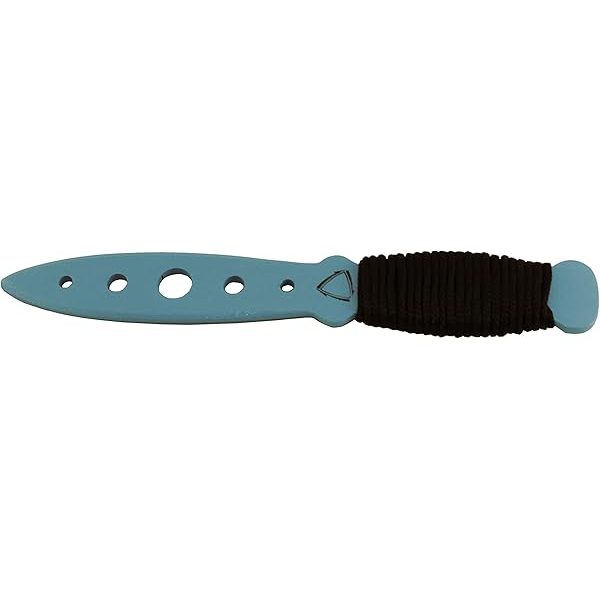In the dynamic world of martial arts, weapon training plays a pivotal role in developing skill, precision, and confidence. Among various weapon tools, Cali training knives stand out as essential for both beginners and seasoned martial artists who want to master Filipino martial arts (FMA) blade techniques. But what exactly are Cali training knives, and why should you consider integrating them into your practice?
This ultimate guide unpacks everything you need to know about training knives, focusing on Cali training knives while comparing them with related tools like pilipino training knives and silate training knives. Whether you’re new to knife training or looking to deepen your knowledge, this article provides practical tips and insights.
What Are Cali Training Knives? And How Do They Differ from Other Training Knives?
What Defines a Cali Training Knife?
Originating from the Filipino martial art of Kali (also known as Eskrima or Arnis), Cali training knives are designed to simulate the real knives used in Filipino blade fighting. They allow practitioners to practice techniques safely while maintaining the feel and handling of a live blade.
Key characteristics of Cali training knives include:
• Straight or slightly curved blades
• Balanced weight and ergonomic handles
• Durable materials that withstand rigorous training
• Designs that emphasize practical combat applications
How Do Cali Training Knives Compare to Pilipino Training Knives and Silate Training Knives?
While often used interchangeably, these terms reflect subtle differences:
Pilipino Training Knives:
A broad category encompassing training knives used across Filipino martial arts. These can include various blade shapes and styles, including those from Kali, Arnis, and Eskrima.
Silate Training Knives:
Originating from the Southeast Asian martial art Silat, these knives usually have more curved blades and emphasize fluid, close-quarter combat styles.
Cali Training Knives:
Focused specifically on Kali techniques, these knives support striking, disarming, and weapon control drills with a practical, no-nonsense approach.
Understanding these differences can help you select the most suitable training knife for your martial arts discipline.
Why Should Beginners Invest in Martial Arts Training Knives?
What Makes Training Knives Essential for Safe and Effective Learning?
If you’re new to knife training, investing in quality martial arts training knives is crucial. Here’s why:
• Safety First: Dull, flexible, or rubberized training knives allow for partner drills without injury risks.
• Skill Development: They enable repetitive practice of techniques, building muscle memory and precision.
• Confidence Building: Practicing with training knives reduces fear, encouraging more dynamic and realistic training.
• Transition to Real Blades: Training knives bridge the gap between theoretical knowledge and real-world application.
For beginners, these tools foster a safe environment to explore complex knife techniques with confidence.
How to Choose the Best Training Knives for Your Martial Arts Practice?
What Should You Look for When Buying Cali or Pilipino Training Knives?
Choosing the right training knives can significantly impact your progress. Consider the following tips:
• Material: Opt for rubber, foam, or plastic blades for partner drills and wooden knives for solo practice.
• Blade Shape: Match the blade to your martial art style—straight for Kali, curved for Silat.
• Weight & Balance: Pick training knives that mimic the weight distribution of live blades for realistic handling.
• Durability: Look for high-quality materials that withstand repeated use and sparring.
• Comfort: Ergonomic grips reduce hand fatigue and improve control during drills.
• Reputation: Purchase from trusted suppliers specializing in martial arts gear.
Investing in quality training knives ensures safer and more effective practice sessions.
What Are Some Common Training Drills with Cali Training Knives?
How Can You Maximize Your Training with Simple Yet Effective Exercises?
Practicing with Cali training knives involves a variety of drills designed to enhance coordination, timing, and precision. Here are some popular exercises:
• Basic Strikes and Cuts: Practice downward, upward, and horizontal strikes to build fundamental skills.
• Disarming Drills: Learn how to safely disarm an opponent using controlled techniques.
• Flow Drills: Partner drills emphasizing continuous motion and fluidity, improving reflexes.
• Footwork Integration: Combine knife techniques with agile footwork for better positioning and evasion.
• Sparring Sessions: Controlled sparring with training knives to apply learned techniques in real-time scenarios.
Remember, always wear protective gear during partner drills to minimize injury risk.
How Do Cali Training Knives Help Bridge the Gap Between Tradition and Modern Martial Arts?
Can Traditional Blade Training Survive in Today’s Fitness-Centric World?
Filipino martial arts have thrived for centuries due to their practicality and adaptability. Cali training knives play a vital role in preserving this tradition by:
• Offering safe, accessible ways to practice ancient blade techniques.
• Providing a hands-on experience that keeps training relevant and practical.
• Encouraging cross-training with other weapon systems, including sticks and empty-hand techniques.
• Enhancing fitness, coordination, and mental focus through dynamic training.
In short, these training knives keep Filipino martial arts alive and evolving.
Quick Tips: Maximizing Your Training Knife Experience
• Always warm up properly before drills.
• Start slow to build technique before adding speed.
• Train regularly to build muscle memory.
• Use protective gear during partner exercises.
• Clean and inspect your training knives regularly.
Consistency and safety are the keys to success in knife training.
Conclusion
Whether you’re a beginner starting your journey or a seasoned martial artist seeking to sharpen your skills, Cali training knives offer an unparalleled tool for mastering Filipino blade techniques. Their realistic design, safety features, and cultural authenticity make them invaluable for any serious practitioner.
Understanding how Cali training knives differ from other pilipino training knives and silate training knives empowers you to choose the best fit for your practice. Coupled with smart training habits and consistent drills, these knives transform your skills and confidence.
If you’re ready to take your martial arts training to the next level, investing in quality martial arts training knives like Cali knives is a crucial step. Embrace the tradition, train safely, and unlock your full potential with the right tools in hand.
 :
https://www.keenedgeknives.com/training-knives
:
https://www.keenedgeknives.com/training-knives

